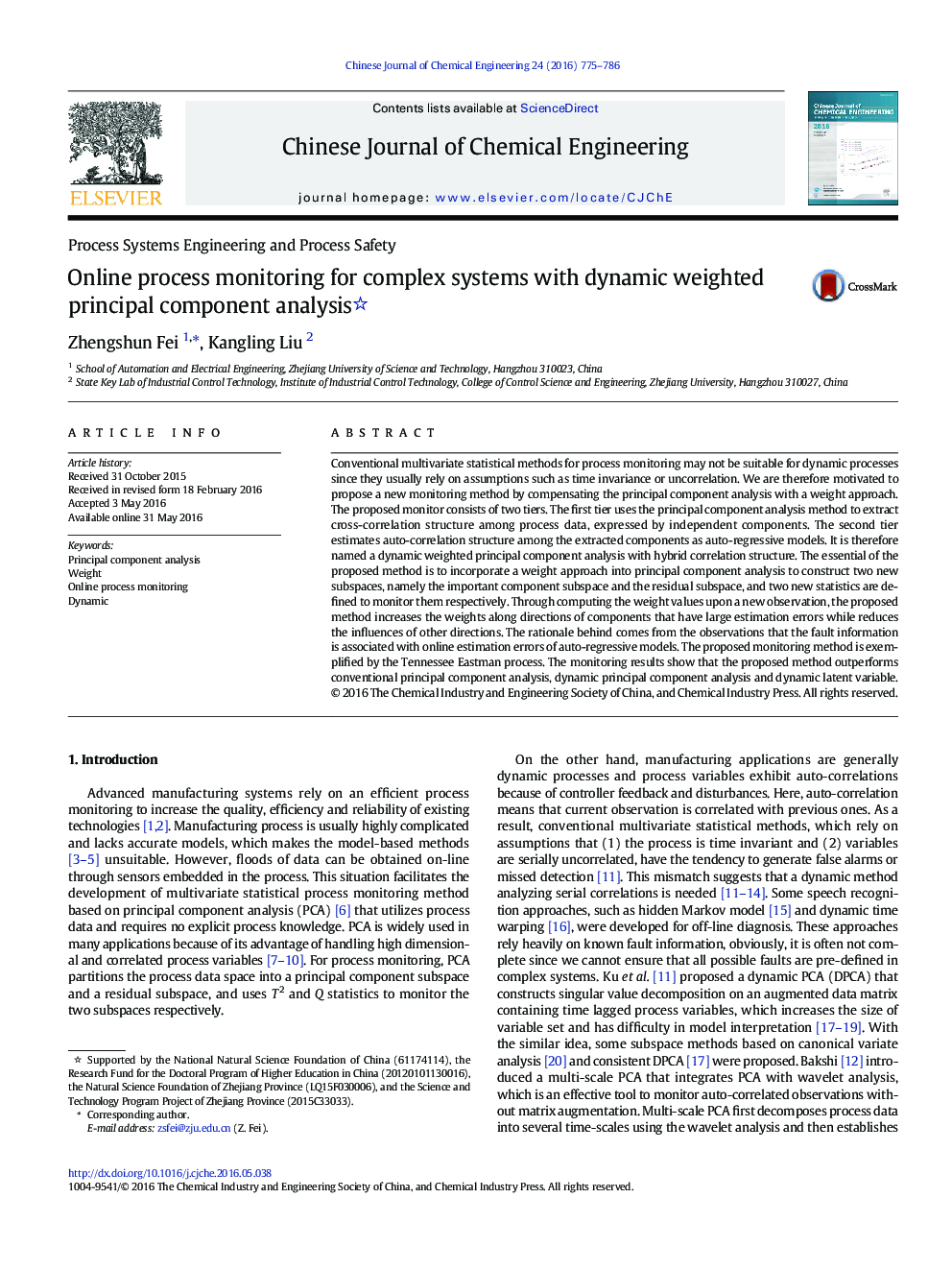| Article ID | Journal | Published Year | Pages | File Type |
|---|---|---|---|---|
| 167930 | Chinese Journal of Chemical Engineering | 2016 | 12 Pages |
Conventional multivariate statistical methods for process monitoring may not be suitable for dynamic processes since they usually rely on assumptions such as time invariance or uncorrelation. We are therefore motivated to propose a new monitoring method by compensating the principal component analysis with a weight approach. The proposed monitor consists of two tiers. The first tier uses the principal component analysis method to extract cross-correlation structure among process data, expressed by independent components. The second tier estimates auto-correlation structure among the extracted components as auto-regressive models. It is therefore named a dynamic weighted principal component analysis with hybrid correlation structure. The essential of the proposed method is to incorporate a weight approach into principal component analysis to construct two new subspaces, namely the important component subspace and the residual subspace, and two new statistics are defined to monitor them respectively. Through computing the weight values upon a new observation, the proposed method increases the weights along directions of components that have large estimation errors while reduces the influences of other directions. The rationale behind comes from the observations that the fault information is associated with online estimation errors of auto-regressive models. The proposed monitoring method is exemplified by the Tennessee Eastman process. The monitoring results show that the proposed method outperforms conventional principal component analysis, dynamic principal component analysis and dynamic latent variable.
Graphical AbstractThe following figure illustrates that PCA monitoring neglects dynamic information hidden in the data and it may be insensitive to changes in the component auto-correlation structure. In the PCS, T2 is computed based on axes t1/λ1 and t2/λ1 that represent the directions p1 and p2 with maximum variances of λ1 and λ2, and in the RS, Q is determined according to axes t3 and t4 along the directions p3 and p4 with minimum variances of λ3 and λ4. Normal sample space lies within the circle and the ellipse. Obviously, auto-correlation structures of components t2 and t3 change from samples x0 → xk to samples xk → xk′, and this change is undetectable by PCA since their statistics are still within the circle and ellipse. To address this problem, we propose a novel process monitoring method that combines time series technique and PCA.Figure optionsDownload full-size imageDownload as PowerPoint slide
